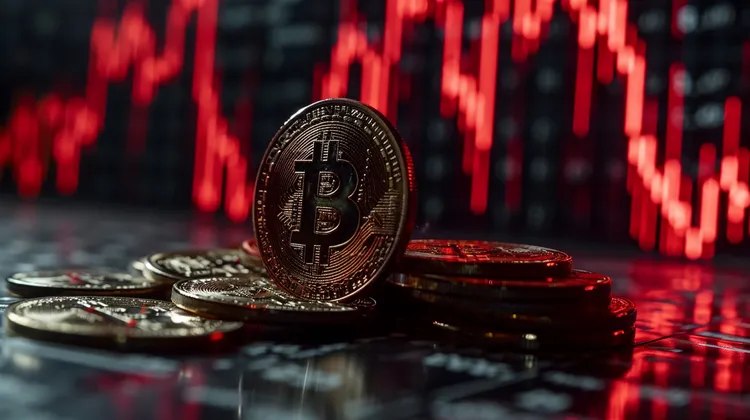In recent months, the cryptocurrency market has seen its fair share of turbulence, and Bitcoin (BTC), as the flagship digital asset, has not been immune to these fluctuations. After soaring to all-time highs, Bitcoin’s value has corrected, slumping below the psychologically significant $40,000 mark. This downturn has had a stark impact on investors, particularly in terms of unrealized profits, according to insights from Bitfinex Alpha, the analytical arm of the Bitfinex trading platform.
Unrealized profit, a term used in the cryptocurrency market, refers to the increase in the value of an asset that has not been sold. It is an indication of how much profit investors could have made if they sold their holdings at a given market price. When Bitcoin’s price drops below critical support levels, like the $40,000 threshold, many investors find their unrealized profits dwindling, a phenomenon that has been observed and documented by Bitfinex Alpha.
The report detailed how the collective mood in the crypto space has shifted from one of widespread optimism to cautious skepticism. As the price of BTC declined, investors who once saw their portfolios grow are now facing the reality of reduced gains and, in some cases, losses on paper. This contraction in unrealized profits can have a psychological effect on the market sentiment, often leading to conservative trading behaviors and decreased market liquidity.
The correction seen in BTC’s price also reflects a broader economic environment that has been affected by various factors. These include fears surrounding inflation, geopolitical tensions, regulatory concerns, and shifts in monetary policy by central banks worldwide. These macroeconomic variables have historically had a considerable impact on risk assets like cryptocurrencies, and Bitcoin is presently experiencing the brunt of these concerns.
The $40,000 level for Bitcoin is not only a significant psychological barrier but also an important technical marker. Technical analysts from Bitfinex Alpha suggest that falling below this level could trigger stop-loss orders and accelerate the sell-off, potentially leading to further losses for investors. As these sell-offs occur, the market often witnesses heightened volatility, creating a challenging environment for both retail and institutional investors.
Within the crypto community, there is talk of a potential ‘glass floor’, which could stabilize Bitcoin’s price. This concept involves the influx of institutional investors and companies using the dip as an opportunity to accumulate more Bitcoin, thereby providing a floor to the price. This interest from larger players could bring some stability to the market, but their actions remain to be seen as the price navigates through this choppy terrain.
Another aspect to consider is the cost of production for Bitcoin. As miners require energy and resources to produce new coins, there’s an economic threshold where mining becomes less profitable, potentially leading to a reduction in the rate of new BTC entering the market. Bitfinex Alpha has pointed out that a prolonged slump in Bitcoin’s price could lead to decreased mining activity, further impacting the asset’s supply dynamics.
Unrealized profit decline also raises the issue of Bitcoin’s safe-haven status. Often compared to gold, Bitcoin is sometimes described as ‘digital gold’, with proponents arguing it can act as a hedge against economic uncertainty. As recent price action shows, BTC still behaves like a high-risk asset and has yet to prove itself as a reliable store of value during times of broader financial market instability.
In response to these market conditions, seasoned investors might adopt strategies such as dollar-cost averaging or hedging to mitigate risks. Meanwhile, others may consider reallocating their portfolios towards more stable assets until the market shows signs of recovery.
What does this all mean for the average Bitcoin holder? The unrealized profits decline serves as a reminder of the volatile and speculative nature of cryptocurrency investments. Bitcoin investors are often advised to only invest what they can afford to lose and to think long-term, avoiding knee-jerk reactions to short-term market movements.
Bitfinex Alpha’s findings act as a bellwether for sentiment and market health in the cryptocurrency sphere. As long-term observers of the space can attest, the only constant in crypto is change; market cycles can move from exuberant peaks to sober troughs in a matter of weeks or months. While the current decline in unrealized profits paints a picture of a market in correction, it is also indicative of an asset class maturing and finding its place within the broader financial ecosystem.
The coming months will be pivotal for Bitcoin as it continues to navigate regulatory landscapes and the shifts in investor sentiment. The crypto market is still relatively young, and while such declines can be unsettling, they also serve as growth opportunities, shaping the resilience and adaptability of investors. The insights provided by Bitfinex Alpha are invaluable in these times, providing data-driven context to a market that is often driven by speculation and sentiment. As always, the future of Bitcoin remains uncertain, but its ability to rebound from setbacks continues to capture the imagination and wallets of investors worldwide.



